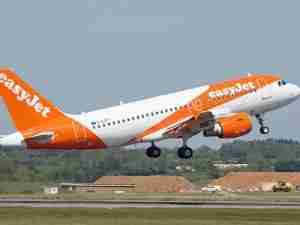US-China aviation talks hit stumbling block on airport access
By: Reuters | Aug 13 2015 at 04:13 PM | Air Cargo
Talks to ease limits on flights between the United States and China's gateway cities have stalled over U.S. fears its airlines will be given less attractive time slots for take-off and landing than their Chinese rivals, people familiar with the negotiations said.
Travel demand by an increasingly affluent Chinese population is set to soar long-term, a huge business opportunity for both countries' carriers. But China's major airports are already heavily congested, limiting the potential for good slots and creating a roadblock to an aviation accord that would deepen ties between the world's two largest economies.
In exploratory talks held in May in Washington, details of which have not previously been reported, China offered to permit more flights to and from Beijing, Shanghai and Guangzhou while lowering caps for other domestic cities, U.S. officials said.
The talks, the first in four years, ended with the U.S. side refusing to pursue formal negotiations until China presents plans to reform what the United States calls an opaque allocation system that tends to give big Chinese state carriers the best time slots, the U.S. officials told Reuters in a telephone interview.
A senior Chinese aviation official said the U.S. was dragging its feet.
"In the past, the Chinese side was not as enthusiastic as the Americans when it came to market liberalization because we didn't need that many flights," the source told Reuters. "But it's the other way around now."
Washington has made clear the ball is in Beijing's court and is waiting for the Chinese side to respond, one person said. It has encouraged China to follow guidelines from the International Air Transport Association (IATA) to accommodate carriers despite congestion.
Officials from both countries spoke on condition of anonymity. China's aviation regulator did not respond to requests for comment.
While there is interest in a new bilateral air services pact, industry experts say an 'Open Skies' agreement, which would remove market restrictions and allow airlines to coordinate capacity and pricing if they have government approval, is likely years away.
Huge Demand Seen
Under existing agreements, Chinese passenger carriers are limited to 180 round-trip flights per week, while U.S. passenger carriers are allotted 160 weekly round-trip flights between the United States and three of China's mega cities.
But airlines are already brushing up against these limits. The top four Chinese airlines have on average scheduled 148 round-trip flights per week from July through September this year, while their U.S. rivals have hit 128 weekly round-trips on average, according to aviation data and analytics company OAG.
Moreover, the number of air passengers traveling to, from and within China is set to nearly triple by 2034 to some 1.3 billion, surpassing an expected 1.2 billion for the United States, according to IATA.
Although China is investing heavily in new airports, its major airports are operating at above or near capacity, limiting the country's ability to assign new attractive time slots to carriers equally. Military restrictions on flight paths are also exacerbating congestion.
Industry experts say U.S. airlines could end up less commercially competitive if Washington were to rush into a deal that resulted in bad flight times and lengthy layovers for their connecting passengers.
"They would be losing a lot of money running flights that arrive and depart in the middle of the night," Joe Tymczyszyn, former executive director of the US-China Aviation Cooperation Program, told Reuters. He did not speak on behalf the program.
Capping capacity for the time being helps U.S. airlines, the most profitable in aviation, as they try not to overshoot demand to keep fares from falling.
Airlines for America, the trade group representing the largest U.S. carriers, said in a statement it supports efforts to liberalize aviation markets even though challenging issues must still be resolved.
An executive at state-controlled Air China Ltd said the airline had not been affected by the slow pace of bilateral talks but might be in the future if it needed to add more flights.
In the long run, the biggest U.S. carriers are keen on an Open Skies agreement as it would allow airline partners to request immunity from antitrust law. Joint ventures with Chinese carriers could then crowd out smaller competitors and boost profits on trans-Pacific routes.
United Continental Holdings Inc has told investors of its interest in a Chinese joint venture once Open Skies are in place.
Delta Air Lines Inc is set to become the first U.S. airline to own part of a Chinese peer, announcing plans last month to buy a 3.55 percent stake in China Eastern Airlines Corp Ltd for $450 million and gaining an "observer" seat on the Chinese carrier's board.










